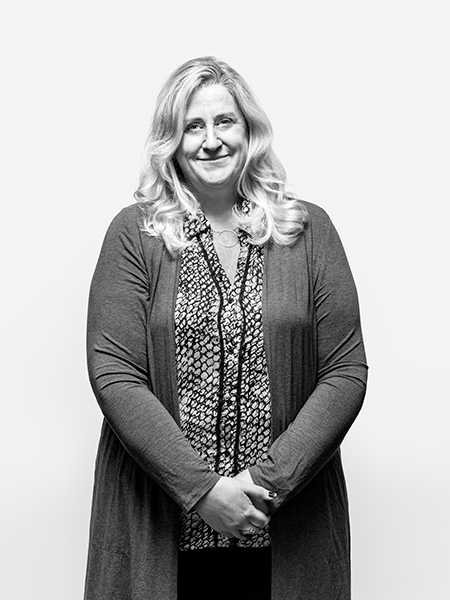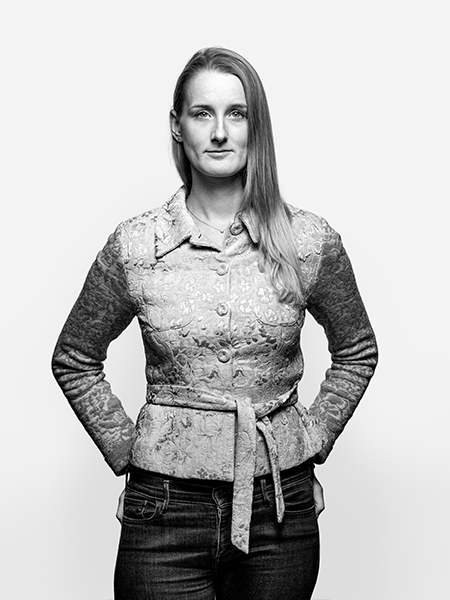What Will Our Customers Expect from Us Tomorrow?
Customer Relationships
What Will Our Customers Expect from Us Tomorrow?
Trends and tastes shape what consumers buy. Knowing what people want is hard. Knowing what they’ll want tomorrow or next year is even harder. With innovation cycles shortening and global trends moving faster than ever, it’s crucial for consumer goods companies and their suppliers to know which way to innovate. That’s why Clariant helps its customers predict trends and keeps its finger on the pulse.
External Expert Interview
Janis Ambrose Shard
As Senior Manager for Cross Car Line at Toyota, Janis works on trends that may change what cars will look like and how we use them.
Read the interviewWhat shapes consumer tastes and trends in cars?

Janis, Henry Ford famously said that his customers could have their cars any color they wanted as long as it was black. Why are we still buying mostly black cars a century later?
Well, we’re not. Actually pearl white has overtaken black, especially in Asian markets. And more to the point, when Henry Ford said that, black was the easiest color to paint. Today’s colors and today’s blacks are not easy to paint. But it is true that black, white, gray, and silver cars tend to hold their resale value a little better. So people play it safe. You don’t just throw out your old car the way you do with a carpet or an iPod. If it weren’t for that, I think consumers would be more open. My team and I are always trying to infuse more colors.
You help set the global color palette for Toyota and Lexus. Was there ever a favorite for you?
I remember a bright orange called »Inferno« that we eventually chose for the launch of our TRD Pro trucks in 2015. I had to fight tooth and nail to get that color. Orange is technically challenging and parts were being painted at different locations so I had to make sure that each factory was able to get it right. But the color made a huge splash at the Chicago Motor Show.
Do societal trends affect which color people buy?
Yes, definitely! In my experience, when the economy is booming, colors go a little bit darker, people turn to black and dark grey. When there is a downturn, we start seeing fluorescence and bright colors because people need optimism.
Besides colors, your team oversees technologies to be rolled out across the entire model range. What are you seeing and how far ahead of the curve are you?
The next big thing will be electrification and the necessary infrastructure – along with, eventually, autonomous driving. Toyota is not always at the forefront of everything, even though we brought hybrids to the mainstream long before anybody else. We tend to be later to the party, but better dressed.
Speaking of appearance, how might autonomous driving change the way cars look?
We’re starting to see how the interior can be packaged differently, because suddenly you’ll have all this free time on your hands as the vehicle whizzes you from A to B.
You’ve been with Toyota for twenty years now. How have tastes changed?
With things like Pinterest and Instagram, everyone’s a designer now. Tastes and expectations are a lot more sophisticated.
How are materials changing?
We’re seeing a lot more natural materials for interiors – organic fabrics for example or bamboo. The European market is leading the way here.
What role do suppliers play in addressing or even setting new trends?
Our reliance on suppliers is huge. They’re the ones bringing in, say, a new technology for a seat material. I’m not the expert in leather or paint technology. So we rely on suppliers competing on new technologies. And they come with some pretty wild ideas.
Are trends the same for every car company?
They can affect our buyers differently than those of other brands. You buy a Toyota for specific reasons and those might be different than the ones for choosing a Honda or a Mercedes.
How important is it that a supplier understands your industry?
It’s one thing if they’ve got a beautiful product. But it has to meet our standards, which are a lot higher than for other industries, not least from a regulatory standpoint. I’ve had suppliers come to me with seat materials they’ve developed for boats. But what might look amazing on a yacht won’t necessarily hold up as a car seat in Louisiana humidity or in Texas heat. Another thing is how you deal with suppliers. For mass production, you want to make sure that it’s a smooth process, whether it’s purchasing or the engineering side. So when we try out a new material, for a concept car for example, we’re also testing what it’s like dealing with that particular supplier.
Internal Expert Interview
Judith van Vliet
As Designer for ColorWorks™ at Clariant, Judith helps companies figure out which colors consumers will favor in coming years.
Read the interviewWhy do we predict trends for our customers?

Judith, what’s the color for 2020?
There’s not one color. That’s a misconception people have, that a single color will work in every context. With ColorForward®, we outline trends and a range of colors that interpret and translate those trends. For 2020, we see consumers gravitating to cooler blues and greens – away from the warmer tones of recent years.
Okay, I feel we’ve jumped right into your work, which is rather unique.
Yes, we are one of a kind within the company – and the industry. I’m a conceptual designer at ColorWorks™, which is the global network of Design & Technology Centers within the Business Unit Masterbatches. In short, ColorWorks™ helps Clariant customers choose the right aesthetic for their product.
Who are those customers?
They come from a wide range of industries – from packaging and automotive, to consumer goods and textiles, to food and interiors. We work directly with these customers. So I would work mostly with a designer or marketeer at a brand to pick the color and finish for a new product.
What goes into these decisions and how can you help?
There’s a lot that comes into play. Obviously their brand and their demographic target, but also societal trends and regional tastes. Clariant has developed its own forecasting guide called ColorForward®. We’ve just finished working on its 14th edition for trends, their respective colors, and associated aesthetics in 2020.
How do you forecast trends?
Our team goes to shows, conferences, and exhibitions all over the world. We talk to other trend watchers, to designers, artists, and customers. And even when we’re just walking down the street, we always have our antennas out. We try to see what is happening and what is different. It’s about all the small signs that might signal change.
Where are those teams you mentioned?
Our teams are located in Italy, Singapore, Chicago, and São Paolo.
What’s in it for Clariant?
It’s to positively distinguish ourselves from the competition. Clariant sells masterbatches that give plastics their unique visual appearance and functionality. The masterbatches market is a crowded one, with many dozens of competitors in Europe alone – from small family businesses to other multinationals. Customers understand, though, that we know their markets better than anybody else. We know societal trends that will shape consumer decisions and we speak the language of their designers.
Why is that important?
Designers don’t talk in color codes. They try to evoke feelings or replicate things they’ve seen in the world. Translating that into something a chemist or an engineer can work with is a big and beautiful part of what we do. And vice versa, we inspire designers by introducing them to things our chemists come up with.
Don’t your customers have people for that?
It depends. Some multinationals have entire buildings populated by color, material, and finish designers – basically people like myself. Yet the most creative companies will always invite different perspectives. Beiersdorf is a good example. The makers of NIVEA™ certainly aren’t looking for new shades of blue and white for their flagship product. Still, they’re usually the first to invite us each year to talk about trends.
How accurate are your predictions?
You never get it completely right. We compile four stories and usually 20 directional colors. Each year, 15 to 17 of those are confirmed, making us 75 to 85 percent accurate. What is most important is that the overarching stories are almost always confirmed.
Have there been forecasts you were particularly fond of?
I was personally very touched by a story we dubbed »Umswenko«. That’s a Zulu word describing the style and attitude of African millennials. It’s part of ColorForward® 2019 and tells the story of the creative and confident startup culture we see flourishing across the African continent, which is inspiring on so many levels. Not surprising, considering Africa is the next big thing.